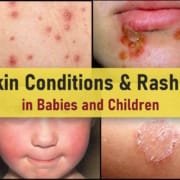Why Does My Belly Button Smell: Causes, Treatment & When to see a Doctor
Have you ever noticed an unusual smell coming from your belly button? If so, you’re not alone. Many people experience this common issue, which, while often harmless, can sometimes indicate an underlying problem that requires attention. In this detailed guide, we’ll explore the causes, symptoms, and treatments for belly button odor, helping you understand when to seek medical advice and how to maintain proper hygiene.
What is the Belly Button?
The belly button, also known as the umbilicus in medical terms, is the spot on your body where the umbilical cord was attached before birth. It’s a unique part of our anatomy, often featuring small folds of skin that can easily collect dirt, sweat, and bacteria. This tendency to accumulate debris is what makes the belly button prone to developing unpleasant odors and potential infections.
Causes of Belly Button Smell
Several factors can contribute to an unpleasant smell coming from your belly button. Understanding these causes is crucial for effective treatment and prevention. Let’s explore the most common reasons:
1. Poor Hygiene: The Primary Culprit
The most significant cause of belly button odor is inadequate hygiene. Our bodies naturally produce sweat, which, when combined with bacteria on the skin, can break down proteins into acids. This process leads to what we commonly know as body odor. The belly button, with its crevices and folds, is particularly susceptible to trapping sweat, dirt, and dead skin cells. If not cleaned regularly, this buildup can result in a noticeable and unpleasant smell.
To maintain proper hygiene and prevent odor:
- Shower Daily: Make it a habit to take regular showers. This helps remove sweat and dirt from your entire body, including your belly button. When showering, gently clean your belly button with mild soap and water each day.
- Dry Thoroughly: After washing, ensure that your belly button is completely dry. Moist environments can encourage bacterial and fungal growth, leading to odor and potential infections.
- Avoid Moisture: Refrain from applying lotions or creams directly to your belly button. These products can create a moist environment that fosters bacterial growth.
2. Cysts: Hidden Culprits Behind the Navel
A cyst is a small sac filled with fluid or tissue. One type of cyst that can develop behind the belly button is known as a urachal cyst. To understand this condition, we need to briefly explain fetal development.
During fetal development, a structure called the urachus connects the bladder to the belly button. Normally, this structure disappears before birth. However, in some cases, it may persist and can become infected, leading to a urachal cyst. If infected, these cysts can cause a foul smell and other symptoms.
Symptoms of an Infected Cyst:
- Lower Abdominal Pain: You may experience discomfort or pain in the lower abdomen area.
- Discharge: There might be an unusual discharge from the belly button.
- Urinary Tract Infections (UTIs): Frequent UTIs can be a sign of an infected urachal cyst.
- Hematuria: This medical term refers to blood in the urine, which can be another symptom.
It’s important to note that persistent infections in urachal cysts carry a potential risk of cancer. For this reason, if you’re diagnosed with an infected urachal cyst, your healthcare provider might recommend surgical removal once the infection is treated.
3. Candida Infections: When Yeast Overgrows
Candida is a type of yeast that naturally lives on your skin and inside your body, including areas like your mouth, throat, gut, and vagina. While it’s normal to have some Candida, problems arise when it grows uncontrollably, leading to an infection known as candidiasis.
In the belly button area, a Candida infection might present with the following symptoms:
- Intense Itching: You may experience a strong urge to scratch the affected area.
- Red Rash: Look for a reddish rash in the folds of your navel.
- Pimple-like Bumps: Small, raised bumps resembling pimples might appear in the affected area.
It’s worth noting that individuals with diabetes are at a higher risk of developing candidiasis. This is because elevated blood sugar levels can create an environment where Candida thrives. If you suspect a Candida infection, consult your healthcare provider. Treatment usually involves antifungal creams or powders.
4. Infected Piercings: A Common Concern
Belly button piercings have been popular for decades, but they come with risks, including the potential for infection. Various bacteria, such as Staphylococcus (often called “staph”) or Streptococcus, can infect a piercing. If you notice a smell along with redness, pain, or discharge around your belly button piercing, it might be infected.
To minimize the risk of infection in belly button piercings:
- Choose a Reputable Piercing Facility: Ensure the facility uses sterilized instruments and follows strict hygiene practices. Don’t be afraid to ask about their sterilization procedures.
- Follow Aftercare Instructions: Keep the pierced area clean and dry. Your piercer should provide detailed aftercare instructions – follow them diligently.
- Avoid Tight Clothing: Tight clothes can irritate the piercing and trap moisture, creating an ideal environment for bacteria to thrive.
Understanding Belly Button Infections
Belly button infections, though often overlooked, are a common issue that can affect individuals of all ages. This can also cause an unusual or unpleasant smell.
Types of Belly Button Infections
There are two main types of belly button infections:
- Bacterial Infections: These are caused by harmful bacteria like Staphylococcus or Streptococcus. These bacteria can enter through small cuts or abrasions in the skin around your belly button.
- Fungal Infections: These are often due to an overgrowth of yeast, particularly Candida, as we discussed earlier.
Symptoms of Belly Button Infections
Regardless of whether the infection is bacterial or fungal, there are several common symptoms to watch for:
- Redness: The skin around your belly button may appear redder than usual.
- Swelling: The area might be swollen or puffy.
- Pain or Tenderness: You may experience discomfort when touching the area.
- Odor: An unusual or unpleasant smell is often present with infections.
- Itching: You might feel an urge to scratch the affected area.
- Discharge: There may be a clear, white, or colored discharge from the belly button.
In some cases, you might also experience fever, which is a sign that your body is fighting an infection. If you develop a fever along with any of the above symptoms, it’s crucial to seek medical attention promptly.
Identifying and Treating Belly Button Smell
The odor emanating from your belly button can vary depending on its cause. This variation in smell can actually provide helpful clues for diagnosis:
- Hygiene-Related Odor: If poor hygiene is the culprit, the smell might be similar to general body odor after sweating – a bit musky or sour.
- Bacterial Infection Odor: This type of odor could be described as sulfur-like, sour, or even cheesy.
When you visit your healthcare provider, try to describe the type of odor as accurately as possible. This information can assist in accurate diagnosis and guide the appropriate treatment plan.
When to See a Healthcare Provider
While some cases of belly button odor can be resolved with improved hygiene practices, there are situations where professional medical advice is necessary. You should consult your healthcare provider if:
- The smell persists despite regular cleaning
- You notice any additional symptoms such as:
- Fever
- Red and irritated skin
- Swelling
- Pus or unusual discharge
It’s also worth noting that if you have a belly button piercing, you might experience an allergic reaction to the jewelry. If you suspect this is the case, remove the jewelry and consult your healthcare provider.
Treatment Options for Belly Button Odor and Infections
The treatment for belly button odor and infections varies depending on the underlying cause. Here’s an overview of common treatments:
- Hygiene Issues: If poor hygiene is the root cause, the solution is straightforward. Implement a regular cleaning routine for your belly button, as we’ll discuss in detail later in this article.
- Candida Infections: These fungal infections are typically treated with antifungal creams or powders. Your healthcare provider will recommend the most appropriate product based on the severity of the infection.
- Bacterial Infections: Treatment usually involves antibiotic ointments for mild cases. For more severe infections, oral antibiotics might be necessary.
- Infected Cysts: These often require a combination of antibiotics to treat the infection and possibly surgical drainage if the cyst is large or persistent.
- Infected Piercings: If you suspect your belly button piercing is infected, the first step is to remove the jewelry. Clean the area thoroughly and avoid wearing tight clothing that could irritate the site. If symptoms persist, your healthcare provider may prescribe appropriate antibiotics.
It’s important to note that belly button piercings can take up to a year to heal completely. During this period, it’s crucial to follow proper aftercare instructions to prevent infections.
How to Clean Your Belly Button
Proper hygiene is the first line of defense against belly button odor and infections. Here’s a detailed guide on how to clean your belly button effectively:
Daily Cleaning Routine
- Gather Your Supplies: You’ll need a soft washcloth, mild soap, and clean, warm water.
- Wet the Washcloth: Dampen the washcloth with warm water and apply a small amount of mild soap.
- Clean Gently: Using the soapy washcloth, gently clean your belly button. Be thorough but gentle – you don’t want to cause irritation.
- Rinse Well: Use clean water to rinse away all soap residue. You can use a clean, damp washcloth or cup your hands with water to rinse.
- Dry Thoroughly: This step is crucial. Use a clean, soft towel to carefully dry your belly button. Make sure it’s completely dry to prevent moisture buildup.
- Avoid Moisturizers: Refrain from applying lotions or creams directly to your belly button area, as these can create a moist environment that bacteria love.
For those with Belly Button Piercings
If you have a belly button piercing, especially a new one, follow these additional steps:
- Clean with Saline: Use a sterile saline solution to clean around the piercing. You can make this at home by mixing 1/4 teaspoon of sea salt with 1 cup of warm water.
- Be Extra Gentle: New piercings are sensitive. Clean the area carefully without moving the jewelry too much.
- Pat Dry: Instead of rubbing, gently pat the area dry with a clean paper towel or tissue. Fabric towels can harbor bacteria.
- Avoid Alcohol and Hydrogen Peroxide: These can be too harsh and may slow down healing.
Remember, consistency is key. Make this cleaning routine a part of your daily hygiene practice to prevent odor and infections.
Preventing Belly Button Odor: Tips and Tricks
While knowing how to address belly button odor is important, prevention is always better than cure. Here are some additional tips to keep your belly button clean and odor-free:
- Shower After Exercise: Sweat can accumulate in your belly button, creating an ideal environment for bacteria. Always shower after intense physical activity.
- Wear Breathable Fabrics: Choose clothing made from natural, breathable materials like cotton. This helps reduce sweat and moisture accumulation.
- Maintain a Healthy Weight: Excess abdominal fat can create deeper belly button folds, making it harder to keep the area clean and dry.
- Be Mindful of Piercings: If you have a belly button piercing, be extra vigilant about cleanliness and follow all aftercare instructions meticulously.
- Watch Your Diet: Some foods can affect body odor. If you notice your belly button odor worsens after eating certain foods, consider reducing their consumption.
- Stay Hydrated: Proper hydration helps your body flush out toxins and can contribute to overall better body odor.
- Use Antibacterial Soap Occasionally: While not necessary for daily use, an antibacterial soap once or twice a week can help keep bacterial growth in check.
When Home Remedies Aren’t Enough: Seeking Professional Help
While many cases of belly button odor can be resolved with proper hygiene and home care, there are situations where professional medical intervention is necessary. Here are some scenarios where you should consult a healthcare provider:
- Persistent Odor: If the smell doesn’t improve after a week of diligent cleaning and care, it’s time to seek professional advice.
- Signs of Infection: As mentioned earlier, symptoms like redness, swelling, pain, or discharge warrant a visit to your doctor.
- Recurring Issues: If you find yourself dealing with belly button odor or infections frequently, there might be an underlying condition that needs addressing.
- Diabetes or Compromised Immune System: If you have diabetes or a condition that affects your immune system, you’re at higher risk for infections. Any unusual symptoms should be checked promptly.
- Unusual Growths: If you notice any lumps, bumps, or growths in or around your belly button, have them evaluated by a healthcare professional.
Remember, your healthcare provider is there to help. Don’t hesitate to seek their advice if you’re concerned about your belly button health.
Conclusion
Your belly button, though small, plays a significant role in your overall hygiene and health. By understanding the causes of belly button odor and implementing proper care routines, you can keep this unique part of your body clean, healthy, and odor-free.










